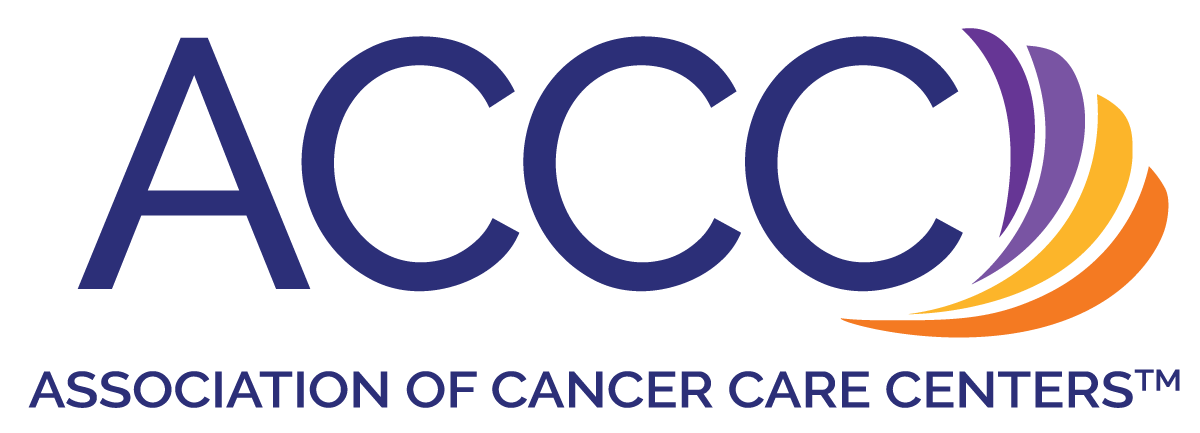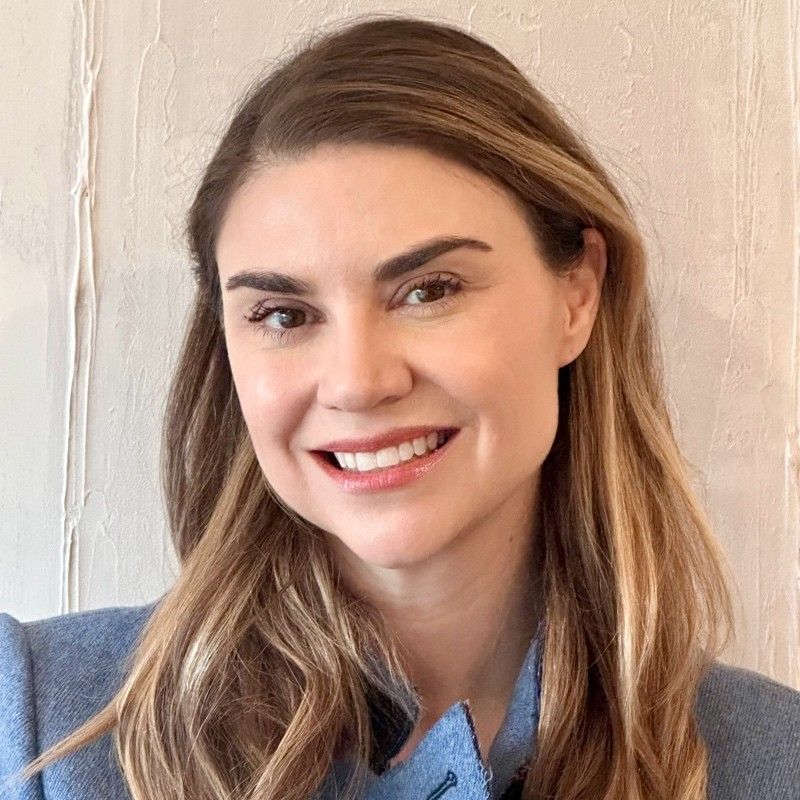- Center on Health Equity & Access
- Clinical
- Health Care Cost
- Health Care Delivery
- Insurance
- Policy
- Technology
- Value-Based Care
Retaining Health Care Workers Starts With Insights on “How We Can Stop Breaking Them”
Friday's keynote speaker, Katherine A. Meese, PhD, addressed the conference theme of workforce support at the Association of Cancer Care Centers 50th Annual Meeting and Cancer Center Business Summit.
ACCC logo | Image credit: ACCC

Ask any administrator of an oncology practice or hospital about their biggest challenges, and staffing will be at or near the top of the list. Long hours, staffing gaps, and difficult conditions were simmering before the pandemic, but the extended brutality of that event set workers’ unhappiness on fire. Older physicians and nurses retired, and others quit.
Data from the American Hospital Association showed that full-time equivalent staff per occupied bed dropped 3% in the first year of the pandemic while patient acuity rose 6%. In other words, there are fewer staff to treat sicker patients.
Katherine A. Meese, PhD | Image credit: LinkedIn

To understand how the pandemic set off this exodus—and what can be done to care for health care workers—the Association of Cancer Care Centers (ACCC) invited Katherine A. Meese, PhD, assistant professor, Department of Health Services Administration at the University of Alabama at Birmingham, to share insights on what it takes to rebuild bonds with today’s health care workforce; the ideas are included in her book, The Human Margin: Building the Foundations of Trust. Meese offered Friday’s keynote address at ACCC’s 50th Annual Meeting and Cancer Center Business Summit.
Meese discussed the phrase, “no margin, no mission,” attributed to Sister Irene Kraus, founder of the Daughters of Charity National Health System. This refers to the fact that without operating funds, a hospital or health clinic cannot stay open, noble intent aside. But Meese argues that “margin” also refers to the people who care for patients. When surgeries are canceled because there are no nurses, or when health systems hire staff with limited credentials because no one else is available, care suffers.
The human beings who care for patients have needs that go unfulfilled, she said, when they are asked to work 30-hour shifts, when they can’t take a bathroom break, or when they can’t stop to have a snack. “I have the goal of trying to understand our humans, how we can stop breaking them and how we can fix them,” Meese said.
Things were eroding before the pandemic, but then several things happened at once: working conditions reached disaster levels and stayed there for more than a year, staffing levels dropped and stayed low, and seeing colleagues die from COVID-19 caused other workers to reassess their willingness to accept the status quo.
“When death feels closer to people, when you're seeing young physicians dying, when you're seeing coworkers getting sick and you're seeing family members getting sick—when that feels closer to you—you start to reevaluate life,” she said. In health care and in other fields, a “great reshuffling” took place as workers decided they would no longer engage in “purposeless” work or persist in a toxic workplace culture where they felt unappreciated.
Between 2020 and 2022, Meese said, the health system lost 10% of its physicians, and over half of those in health care who switched jobs did not return to the same industry. More recent health care workforce data have been promising; they show raw numbers starting to return to prepandemic levels (although nursing and elderly care remain below February 2020 levels). However, the average age of health care workers has plummeted as experienced workers have left, and the “demand side” has soared, as an aging population demands more care. In cancer care, a recent study showed 134,000 cases went undiagnosed during the first 10 months of the pandemic, and those more advanced cancers are now being treated.
Meese said there are still troubling signs in the health care workforce: burnout and stress affected 75% of the workforce in 2022, compared with 60% in 2018; the suicide rate for female physicians is 1.46 times higher than that of male physicians. A different approach is needed than one that churns through staff, “as if a 40-year-old nurse with 20 years of experience is somehow comparable to someone who just came out of a BSN program.”
In health care, she said, “We treat people as more disposable than we do in other industries, where it's not even a human centric industry. And so, I think we have a pretty severe requirement here—and an opportunity—to rehumanize the work of health care.”
Perhaps, she said, redesigning an exam floor to reduce a doctor’s steps and squeeze in 2 more patients per shift is not the best idea. Meese would argue the doctor may need that walk down the hall to collect his thoughts before he sees the next patient. “If we're not creating a work environment like that, we're going to have people burn out and leave.”
How Workers Flourish
There is evidence of what conditions are needed for workers to excel and be happy, and Meese said health care provides some of them. A model of this environment includes several core elements: It should create positive emotions; it should offer engagement, or focused time on the task, where workers can get into a flow without interruption. “We know that when people have to task switch, it leaves something called cognitive residue,” Meese said. “We take a little bit of the previous task with us into the next thing.”
The workplace should offer time to form relationships, which is becoming increasingly difficult in health care. A job should offer opportunity for a sense of accomplishment, which health care provides. However, this is more challenging as fields become more specialized, and multiple team members have a role in each patient’s care.
One thing the brain is not optimized for is decision making in distress, Meese said. The human brain can rise to occasion for brief periods of intense stress, but an extended period of chronic stress can result in an atrophied prefrontal cortex, she said. This is what occurred in the pandemic, and failing to acknowledge that workers have not recovered is both wrong and dangerous.
“Creating healthy work is not just the right thing to do. It's not just important for meeting our broader goals of the organization to improve the health of the community,” Meese said. “It’s also, we don't want to mess up people's brains for the long term.”
Recruitment and Retention
Meese then reviewed evidence from health care worker surveys, which measured correlates of retention as well as a net promoter score (NPS), or qualities that would cause the worker to recommend the enterprise to someone else.
The top correlates of retention, in order, were burnout, organizational support, a sense of belonging, and recognition. The top NPS factors were, in order: organizational support, trust in senior leaders, resource availability, recognition, and a sense of belonging.
What about money? More so than other professions, health care workers are drawn by a sense of purpose. Money ranked seventh on the list of correlates of retention, so it does matter—but not in the way some may think. “When people say it’s the money—and I’m sure you’ve heard that—what they might actually be saying is, ‘You can't pay me enough to put up with all [these other things]. You can't pay me enough to stay in an environment where I don't have these things.’”
An MIT analysis of 1.4 million Glassdoor reviews of health care workers found that the top reason workers chose to leave an organization was a toxic corporate culture. Lack of recognition and a poor response to COVID-19 were also listed. “All these things lead to low levels of trust,” Meese said.
Trust and Forgiveness
What are the elements that build trust? The first ones are competency and consistency. Others are honesty, including owning your mistakes. Others including building relationships, including communication directly with employees “instead of cascading everything.” Another is clarifying expectations, so there are no surprises. Finally, in health care, safety matters to workers.
In health care, workers know that administrators were faced with tough decisions and no good options, Meese said. What contributes to anger is the fact that when mistakes happened, so often no one apologized.
“Science says that there are benefits of forgiveness in the workplace—that it can restore the physical and mental health of both the person apologizing and the person accepting the apology or forgiving,” Meese said. “It restores our sense of humanity…. and it can also lead to better innovation, productivity, job satisfaction, and organizational performance. For all these reasons, apologizing and forgiveness has to become a new core leadership competency."
Trends in Hospital Pricing for Vulnerable Emergency Department Users, 2021-2023
December 4th 2025Self-pay emergency department prices rose significantly from 2021 to 2023, especially at for-profit and system-affiliated hospitals, highlighting growing affordability challenges for uninsured and underinsured patients.
Read More
Mental Health Care Use After Leaving Medicare Advantage for Traditional Medicare
December 1st 2025Medicare Advantage beneficiaries with mental health diagnoses see more nurse practitioners and fewer internal medicine and emergency medicine specialists after switching to traditional Medicare.
Read More
